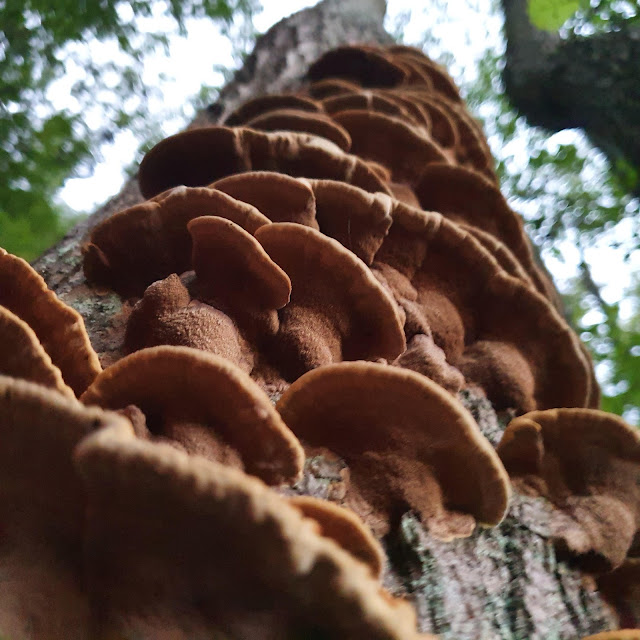One possible glimpse of the Shrike, but mainly fungi today.
This is lumpy enough to be Phlebia, but a rather capped version, on a very decayed log. Unlikely to be Phlebia radiata though I would have said.
I think this could be Smoky Bracket, Bjerkandera adusta, and possibly a few Sulphur Tufts, Hypholoma fasciculare. (Note from February 2024, this could also be Bjerkandera fumosa)
This just MIGHT be very young Smoky Bracket, judging on its very white margins.
I think that this might be Stereum gausapatum, the Oak Curtain Crust. Abrasion caused some reddening on the left, mid-centre.
























